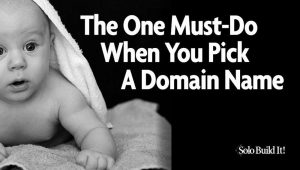Seventy-five years ago, when Dale Carnegie published How to Win Friends and Influence People, businesses were captivated with an instruction manual that would forever change their approach to relationships. Today, the buzz in marketing and PR departments around influencer management programs is pretty loud and Dale’s core message—that success has everything to do with understanding people and influence—is making a comeback.
While brands have long courted influencers, the advent of social media has surfaced a new model: online influencers. We are clearly on the cutting edge of influence revival, yet few companies have advanced their work beyond occasional campaigns to full-fledged programs. So how do you create successful influencer programs that can scale over time and are focused on moving targeted influencers from brand awareness to advocacy? There is a method to the madness, and it would have made Mr. Carnegie proud.
In this three part series, I’d like to start a conversation by sharing an approach that we’ve explored at Adobe about how brands can standardize the way they work with influencers. For us, strategic social engagement with influencers is accomplished through three core principles: identification, management and measurement. There are undoubtedly numerous ways to structure the process, but the goal is still the same: identify, target, and convert online relationships with influencers into offline, in-person relationships, creating advocates and brand loyalists.
What Is an Influencer Exactly?
Despite the popularity of modern day influencer campaigns, the concept is still relatively new, and companies across industries have varied definitions of what an influencer actually is. Influencers are not your internal support team or employees, but third-party thought leaders—the very people you want to advocate on your behalf. While advocates in general are a good thing, it’s important to understand that influencers may or may not be an advocate for your brand or your competitor. In fact, they may not even be your customers. Rather, they are people who are respected in the industry for shaping opinions. Let’s define an influencer as anyone who, through actions or opinions, is able to shape opinions, perceptions, or behaviors of others. And brands? They’re doing all they can to target them in hopes they’ll eventually become advocates.
Why are influencers so important? Well for one thing, leads generated by B2B advocates are more valuable than the average lead, up to 10 times more according to Influitive. Consumers are searching for help from others online, and “word of mouth” is now the primary driver. Research from Mckinsey tells us that as much as 50 percent of all purchasing decisions are made directly as a result of reading peer reviews.
Identification
How do you identify the most influential people talking about your brand and your competitor? What is your share of the conversation? Identifying the influencers that you need to engage with and then using measurement analysis to learn how much they’re talking about you versus the competition pinpoints your share of influence relative to your competitor. This is the core framework for influencer relations and it begins with identification.
Discovery. The process of identifying influencers is undoubtedly different for every organization, yet they all face the same dilemma. Do we build our own system, or do we buy a system for identifying? Tools are readily available, from simple and free to highly complex. But if you decide to keep the process in house, be prepared to weight variables appropriately. For instance, how important is authority versus relevancy or recency versus engagement, and how do you assign a weighting that reflects these differences? Do you have an expert resource that can take data you’re listening to and build an algorithm that does this weighting for you? Enterprise class tools are a dime a dozen. Whether you opt for one or decide to go it alone, the key is to stay objective and use competitive insight as part of the process to create key lists that can be tracked.
Mapping. Mapping where influencers fit in the different stages of the process highlights where you need to focus your efforts. Some people may be aware of your brand and its positions, but don’t buy, letting you know that you need to work on establishing credibility. Others may have an emotional connection but are just not loyal. Maybe you have a great customer immersion program. Mapping helps guide influencers in the right direction and identifies gaps where campaigns or programs designed to move people are missing. I’ve used this chart often to map where influencers are in their relationship with Adobe.
Write targeted influencer names under each category based on where you feel they are in the process. While this is a subjective analysis, the goal is to move influencers progressively from left (awareness and credibility) to right (loyalty and advocacy). Be careful not to get so aggressive that you create unmanageable lists. Instead, pick a conservative number of influencers. Keeping it short gives you a manageable number to work with and allows for easy measurement.
Identification is the first step in our campaign to transition influencers into advocates. In Part 2 of this series, we’ll look at Management of Influencers and suggest some ideas for how to keep track of both online and offline interactions. This is just one approach, and not nearly exhaustive when it comes to creating a standardized way to work with influencers. Do you have an approach you can share?
Business Articles | Business 2 Community
(267)
Report Post




